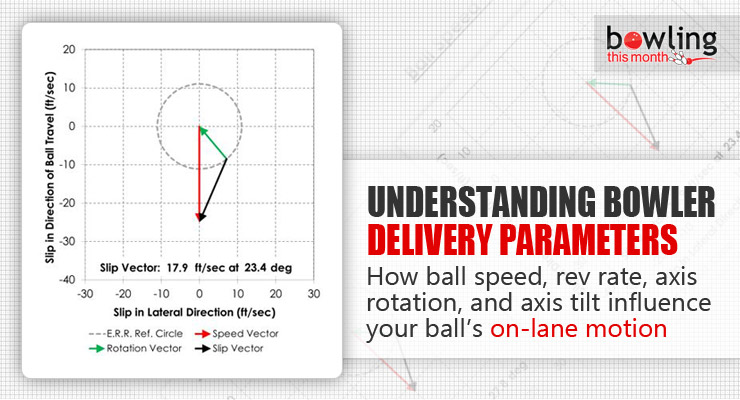Article Contents
- 1. Background
- 2. Ball motion basics
- 3. Slip vector analysis and visualization
- 4. Why do we care about the slip vector?
- 5. A few hypothetical examples
- 5.1. Example #1: What happens when ball speed changes?
- 5.2. Example #2: What happens when rev rate changes?
- 5.3. Example #3: What happens when axis rotation angle changes?
- 5.4. Example #4: What happens when axis tilt changes?
- 6. What about when the ball goes down the lane?
- 6.1. Example #5: The low rev stroker vs. the two-handed cranker
- 6.2. Example #6: Can a bowler have a “forgiving” axis rotation angle?
- 7. Final comments
Note: This article is only available to Bowling This Month subscribers.
Bowling balls, coverstocks, RGs, differentials, layouts, balance holes, and surface adjustments are all important parts of the modern game. It is very valuable for bowlers to learn about and experiment with these elements as they build their knowledge of the game. However, many of us sometimes overlook the most important part of the ball motion equation: the bowler. The truth is that the unique delivery style of the bowler has the largest overall impact on ball reaction.
A bowler’s exact “style” is comprised of six components:
- Ball speed: linear velocity of the ball at release (measured in miles per hour).
- Rev rate: angular velocity of the ball at release (measured in revolutions per minute).
- Axis rotation angle: the amount of “side roll” the ball has at release (measured in degrees).
- Axis tilt angle: the amount of “spin” the ball has at release (measured in degrees).
- Positive axis point (PAP): point on the ball’s surface that intersects the initial axis of rotation (in inches from the grip center).
- Loft distance: distance from the foul line to the ball’s initial contact point with the lane (measured in feet).
This article will focus on the first four components. The combination of these four parameters tells us a great deal about how the ball will respond to friction. The other two items in the list (PAP and loft distance) are also both very important, but for reasons unrelated to the purpose of this article. We’ll leave them for another discussion.
Many books, videos, and articles on delivery parameters give general tips and guidelines for what types of adjustments might be warranted in different scenarios. They might say something like, “If the ball isn’t hooking enough, slow down your ball speed,” or, “If the ball isn’t finishing hard enough, increase your side roll.” ...
Already a premium member? Click here to log in.


